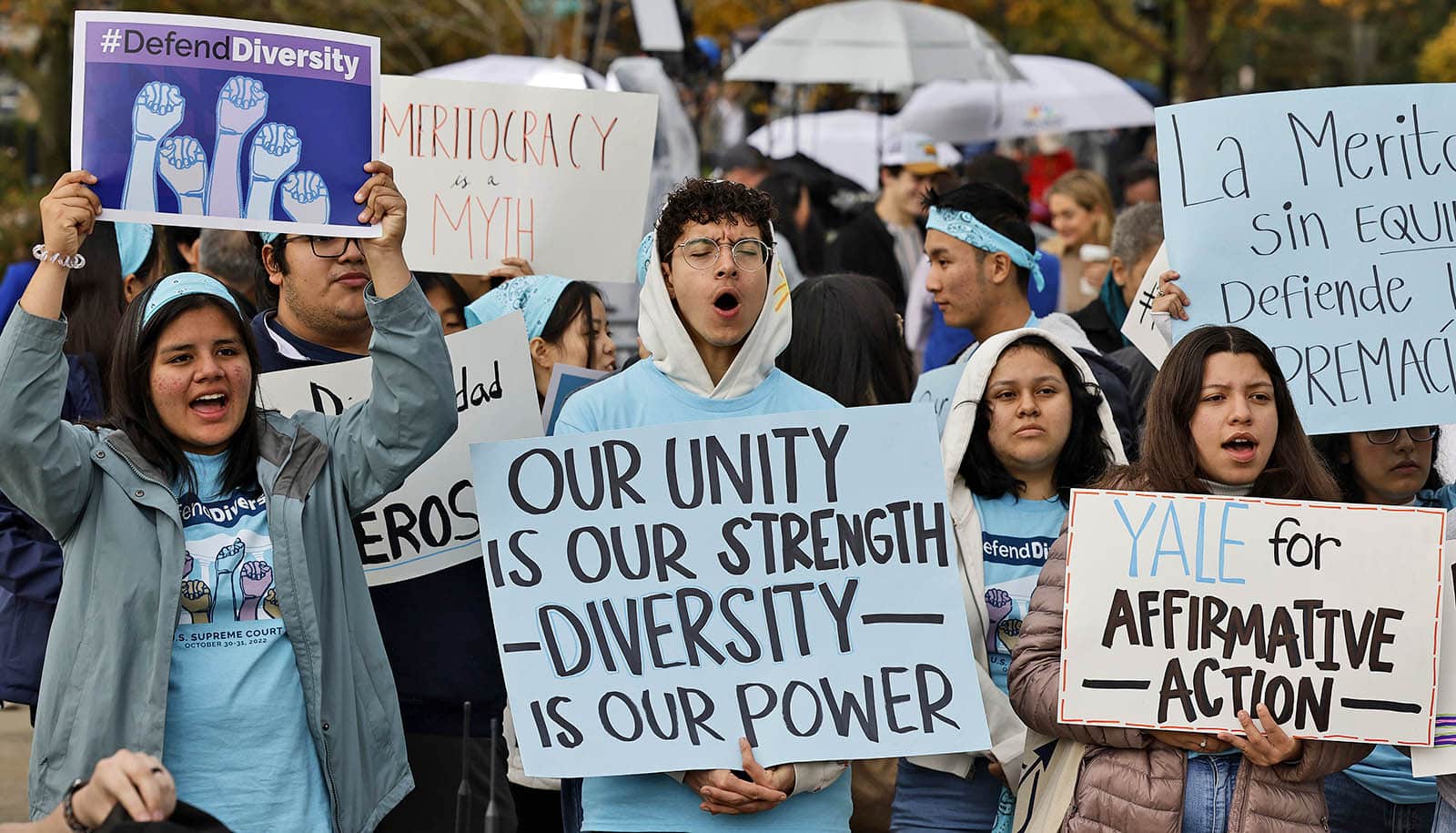In the run-up to the United States Supreme Court issuing a ruling on affirmative action, an expert explains the practice’s role in higher education.
The Supreme Court heard arguments in the fall over the use of affirmative action in admissions at Harvard and the University of North Carolina and is expected to release decisions in the cases in the coming months.
Below, Cara McClellan of the University of Pennsylvania Carey Law School talks about how the practice has benefitted institutions and how the diversity it brings has helped colleges and universities fulfill their educational missions.
McClellan is the founding director and practice associate professor of the Advocacy for Racial and Civil (ARC) Justice Clinic, the Penn Carey’s newest in-house clinic, which provides students with hands-on experience working in civil rights litigation and policy advocacy to combat systemic racism.
Why was affirmative action necessary to implement at colleges and universities, particularly at the time when it was implemented?
Affirmative action was created to level the playing field by combatting the impact of years of racial discrimination. Most colleges and universities excluded people who were not white men or who did not come from elite backgrounds. Unfortunately, the effects of systemic racism are still felt today.
Many colleges and universities continue to have admissions policies that consider criteria that unfairly disadvantage applicants of color and low-income applicants, in part due to historical discrimination and the reality that K-12 education remains racially segregated and unequal today.
For example, legacy preferences benefit students who come from backgrounds that were not historically discriminated against and excluded from higher education during past generations. Some colleges and universities evaluate students based on how many advanced placement (AP) courses they have taken, but schools that serve students of color and low-income students are less likely to offer AP courses. In addition, many elite schools rely on SAT or ACT scores, but these standardized tests are strongly correlated with the income of a student’s parents and whether the student had access to expensive test-preparation programs.
In short, many of the criteria that colleges use to evaluate applicants are not actually fair and neutral, making it necessary to affirmatively consider the impact of race and access to resources when assembling a qualified class of students.
How have institutions benefitted from the practice?
Diverse students push their universities to become better institutions in many ways. Learning amongst students who have different backgrounds and experiences fosters stronger critical thinking skills, empathy, and overall knowledge, which are essential for the future leaders of a society that is becoming increasingly more diverse. Diversity makes programs of higher education stronger and more inclusive and produces more qualified alumni. The Supreme Court has held repeatedly for more than 40 years that race is an important and permissible consideration among many factors for colleges and universities to consider because of the demonstrated educational benefits of diversity.
Why is it important to keep affirmative action rules in place at colleges and universities?
The practical impact of ending affirmative action would be significant. In the Harvard litigation, both experts agreed that the result of ending affirmative action would be a reduction in the number of Black and Latinx students on campus by about 50%. We know from the experiences in states where race-conscious admissions has ended, for example, in Michigan and California, Black student enrollment has decreased by more than 25% and Latinx student enrollment has decreased by nearly 20%, according to multiple studies.
Ending race-conscious admissions would thus create a significant barrier to ensuring that students of all backgrounds have access to higher education and to the career pipelines that universities create. This is particularly true because segregation and racial inequity remains pervasive in K-12 education, creating an unequal playing field when students apply to college.
The legal impact would also be significant. The Equal Protection Clause of the 14th Amendment was intended to increase opportunity, but opponents of affirmative action are asking the Supreme Court to adopt a definition of equal protection that would actually return higher education institutions to exclusionary spaces reserved mainly for white and privileged students.
What are the main misconceptions about how affirmative action works?
One misconception is that affirmative action leads to discrimination. Under the law, universities can only consider race as a plus and never as a negative. Moreover, race can only be considered as a factor of a factor. This means race is only considered as one of many factors in the review of applicants that have already been deemed to be academically qualified. In the Harvard litigation, data revealed that of the 2,600 applicants for the Class of 2019, approximately 3,500 had perfect SAT math scores, 2,700 had perfect SAT verbal scores, more than 8,000 had a perfect converted GPA, and nearly 1,000 had a perfect composite score on the SAT or ACT. In short, there were too many qualified students to make it possible to make decisions based only on grades and standardized test scores. Instead, other factors are considered within the pool of highly qualified applicants in order to assemble a class of students who can contribute in many ways to the Harvard community.
Holistic admissions practices allow schools to consider the whole picture of who an applicant is, providing greater context to the traditional admissions considerations, like test scores and AP classes. Eliminating the consideration of race from the admissions process would mean that an applicant’s religion, immigration status, socioeconomic status, or other components of identity could be considered but racial identity could not. This would disproportionately disadvantage students of color for whom race is an important part of their personal identity and background.
What is the most important thing for people to understand about affirmative action?
Affirmative action policies benefit all students. Diverse learning environments enrich the college experience for everyone and better prepare students of all backgrounds to succeed in a multicultural society. Colleges and universities cannot fulfill their educational missions without cultivating diversity, including racial diversity. In addition, all applicants benefit from an admissions process that looks beyond test scores to consider a student’s many identities and evaluate them as a whole person.
Source: Penn

